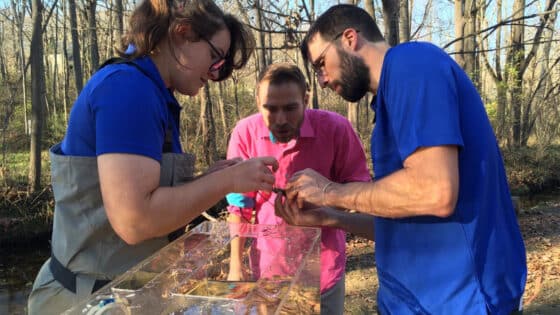Conley, J.M., D.H. Funk, D.H. Hesterberg, L.-C. Hsu, J. Kan, Y.-T. Liu, and D.B. Buchwalter. 2013. Environmental Science & Technology 47:7965–7973.
Abstract
Little is known about the bioaccumulation dynamics, biotransformation processes, or subsequent toxicity to consumers of dissolved selenite (SeO3) versus selenate (SeO4) uptake into aquatic primary producer communities. To address these data gaps, we examined SeO3 and SeO4 bioconcentration into complex freshwater periphyton communities under static and static-renewal conditions. Further, we explored periphyton biotransformation of Se species using X-ray absorption near edge structure (XANES) spectroscopy analysis and changes in the periphyton associated microbial consortium using denaturing gradient gel electrophoresis (DGGE). Last, we fed differentially treated periphyton to the mayfly Centroptilum triangulifer in full life cycle exposures to assess toxicity. Selenite exposed periphyton readily bioconcentrated Se while, in contrast, initial periphyton uptake of SeO4 was negligible, but over time periphyton [Se] increased steadily in conjunction with the formation of dissolved SeO3. XANES analyses revealed that both SeO3 and SeO4 treated periphyton biotransformed Se similarly with speciation dominated by organo-selenide (∼61%). Mayfly survival, secondary production, and time to emergence were similar in both SeO3 and SeO4 treated periphyton exposures with significant adverse effects at 12.8 μg g–1 ((d.w.) secondary production) and 36 μg g–1 ((d.w.) survival and development time). Overall, dissolved selenium speciation, residence time, and organisms at the base of aquatic food webs appear to be the principal determinants of Se bioaccumulation and toxicity.



